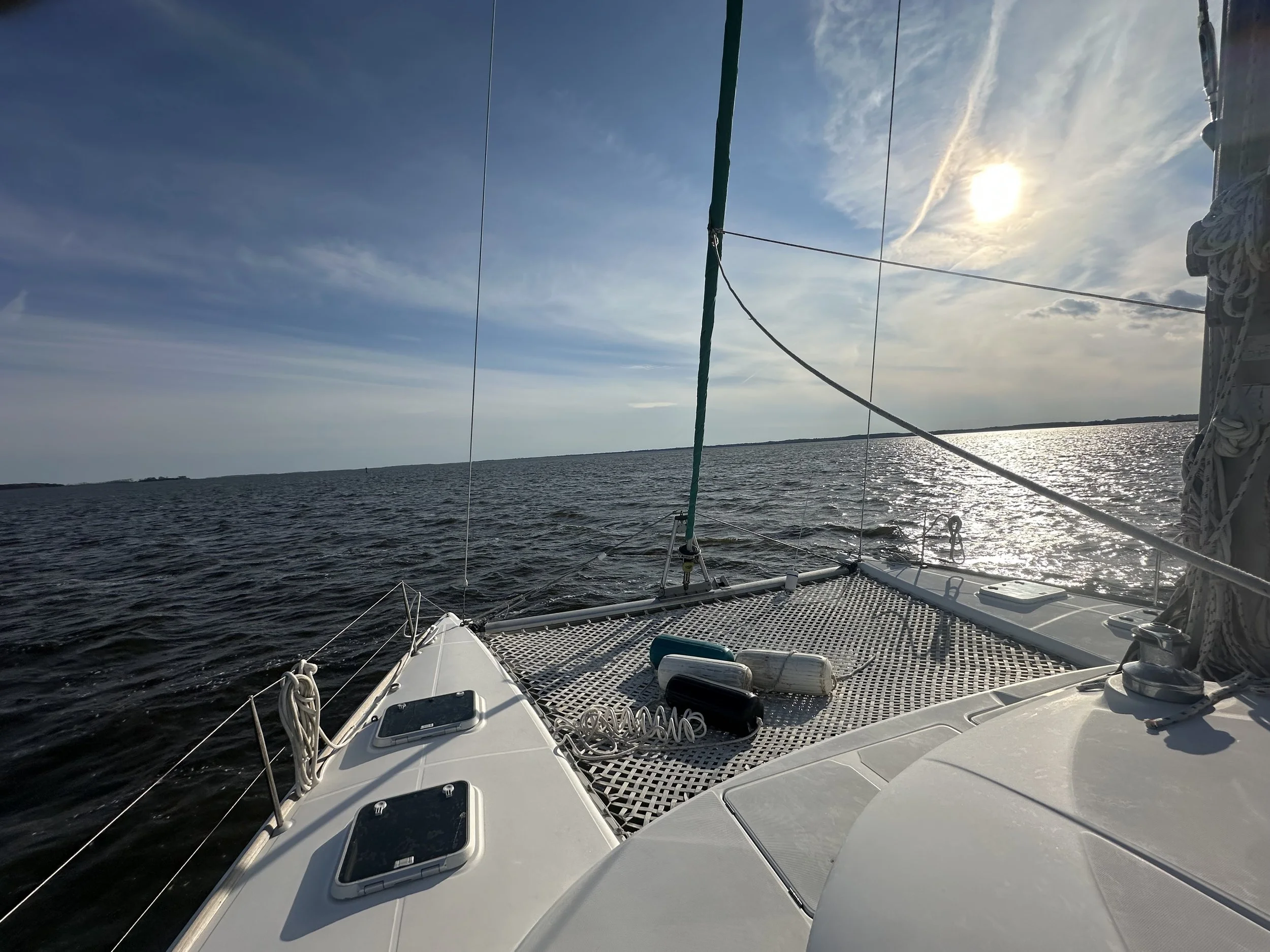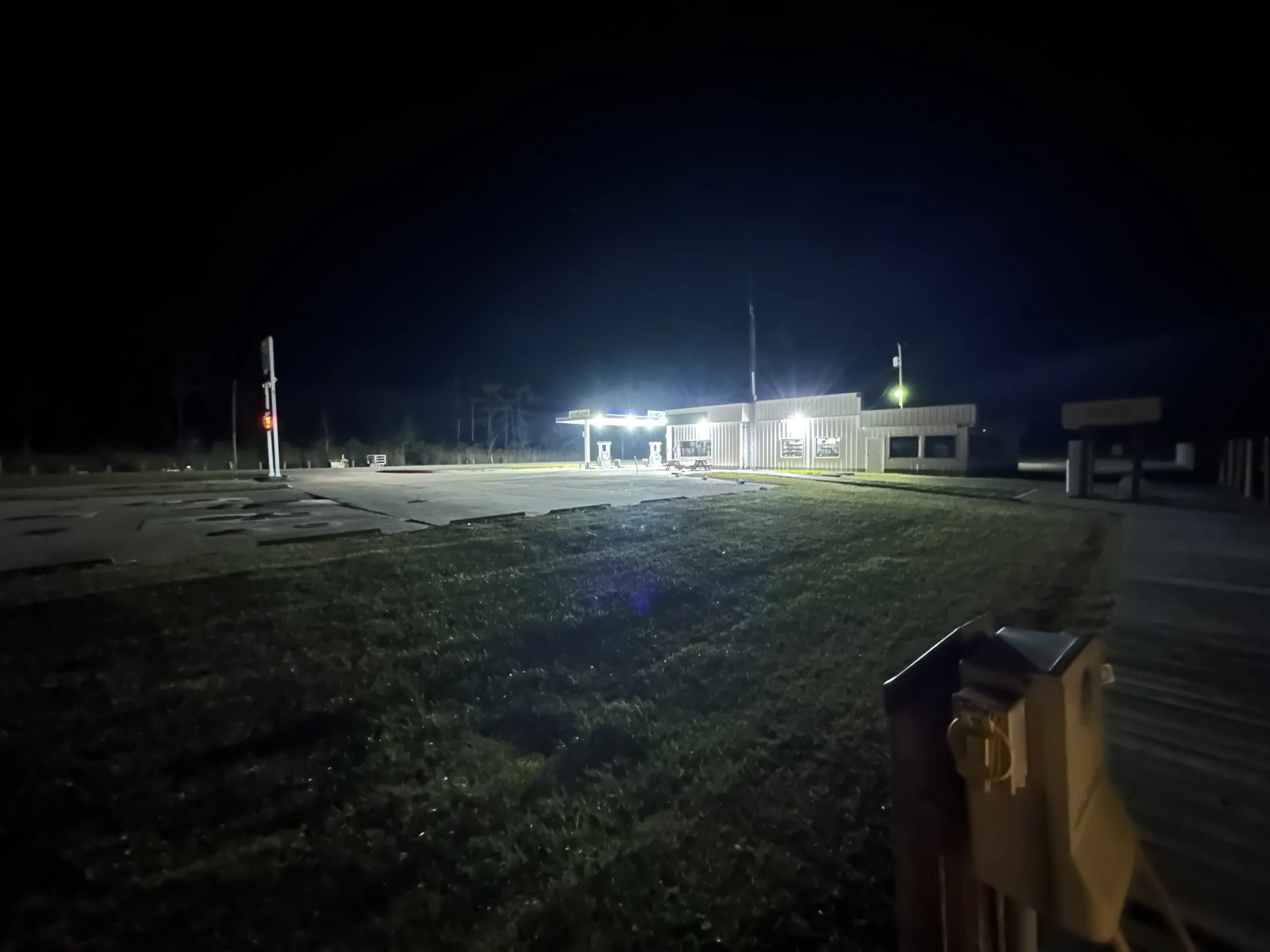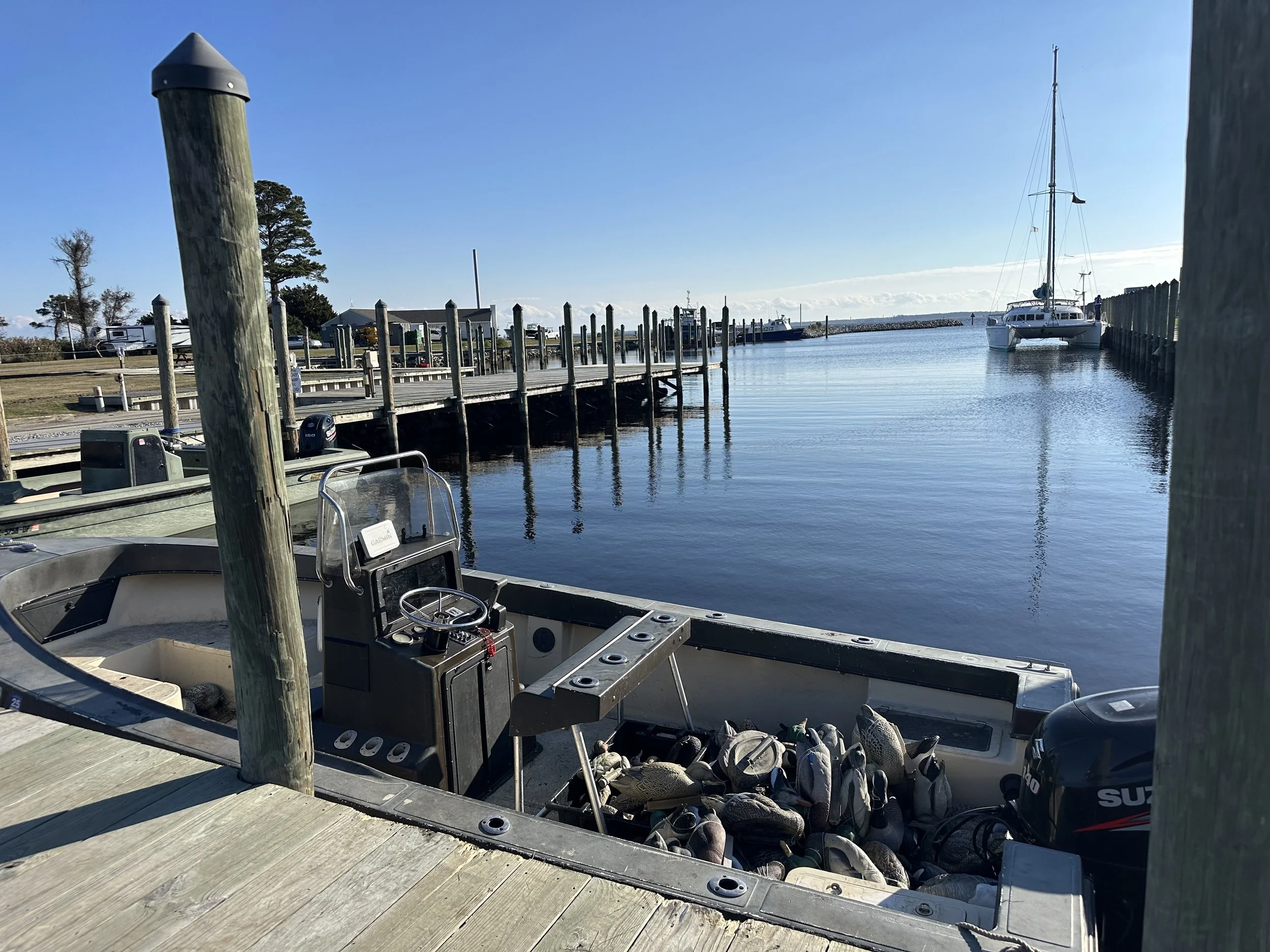Catamaran Delivery, Day 2: Norfolk, VA to Columbia, NC
Relived by our captain and the owner at 7am, I went below to my berth and slept until nearly 10am. As I woke, we were passing under the second bridge of the ICW; I looked up from my sleeping bag through the overhead hatch as we ghosted beneath the girders of its underside. We had some uncertainty around our air draft (how tall our mast and its antennas were); most of the ICW bridges are 65’ tall, limiting its use to boats under that height.
It remained cold, and I stayed in the cabin in the morning, allowing myself the luxury of a hot (if brief) shower, shave, and change into fresh clothes. Our intended destination was the Coinjock Marina, some 30nm south. A significant weather system is expected on Wednesday, and it will likely preclude all travel at least through Saturday and possibly beyond; as we called into the marina to request space, they told that they (and every other marina in the area) would be fully booked.
Our options were scarce - the best being a small marina at the northern mouth of the Alligator River. Getting there would require steaming until 9pm or so, long after the sun sets. We’d need to transit the Albemarle Sound after dark; while navigable in 2 hours or so, it’s often filled with steep chop, and its southern exit includes a shallow, twisty S-turn. The skinny waters, narrow channel, and unlit daymarks and obstacles would prove challenging.
The day passed easily enough, however; I stood watch from 1pm to 4pm, my first in the ICW proper. The ditch is shallow, and on a 24’ wide catamaran, navigating without running aground requires vigilance. One challenge with a boat that you don’t know personally is uncertainty around the accuracy of the electronics, especially the depth sounder; reportedly, ours was set to the depth of the keel, but in such shallow depths a few inches of miscalibration could mean getting stuck in the mud, or worse.
We worked our way down the Albemarle and Chesapeake Canal, passing the (full) Coinjock Marina in the early afternoon, and reached the northern mouth of the Albemarle Sound around 3pm. The Sound can be very rough - it’s shallow, averaging 10’, and is known for short, steep chop. We were fortunate in that we had calm waters ahead, but the downside to our timing was that we’d reach the southern end after dark. There is a difficult, twisty, shoaling S-turn between the Sound and the Alligator River - tricky piloting under the best of conditions.
As we reached Alligator Light 1AR, I took the helm, with our captain and the owner standing by with spotlights. Helming close to Bob423’s tracks, and squinting into the darkness, we piloted cautiously. With our wide beam, misjudging by even a few feet would mean running aground, potentially damaging the boat, and being stuck for the night.
I found that the autopilot was key here; while slower to respond than manually steering with the wheel, I was able to nudge us by degrees through the channel (an ill-suited term here), dodging the unlit daymarks and one half-submerged nun. As we reached the Alligator River, with 45-minutes of intense concentration behind us, I yielded the helm and went below to take a breath and warm up.
We arrived at the Alligator River Marina around 8:30pm, well after dark. Unlit pilings marked the entrance, and the marina was basically just a gas station and a double wide trailer converted into showers. There is very, very little around this part of North Carolina - only a long, dark state road, and some of the deepest poverty I’ve seen in this part of the country.
I slept well, although the heat continues to not work in my cabin. In the morning, I took my first on-land shower since departing, shaving my head and luxuriating in the heat, and then walked over the “marina office” for a dubious breakfast sandwich. I had hoped for coffee for the crew, but through the deep, pleasant accent of the Carolinas, the woman working behind the counter sadly reported that the “truck hadn’t arrived for days”, and they were out.
Folgers in the cabin remained on hand, however, and with a few final photos taken, we cast off the lines, sailing for Belhaven Marina - reportedly a much more robust stop.



